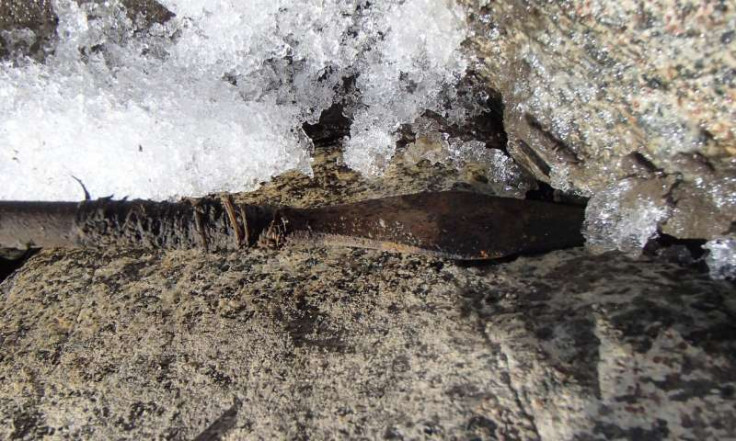Thousands of preserved Iron and Bronze Age artefacts discovered after ice glacier melts in Norway
Glacial archaeologists found 4,000-year-old arrows, Bronze Age clothing and even a ski with its binding from 700 AD.

Melting glacier ice in a Norwegian mountain range has yielded an incredible haul of more than 2,000 ancient hunting artefacts dating from various periods, some of which are as much as 4,000 years old.
An international team of 'glacial archaeologists' have been investigating the edges of contracting glacier ice, enabling them to find artefacts made from wood, hide and other organic materials which are rarely preserved.
The researchers found objects, including arrows, Iron and Bronze Age clothing items and even a ski with its binding from 700 AD in the mountainous Jotunheimen and Oppland regions, which include the country's highest mountains.
Their new findings are outlined in a paper published in the journal Royal Society Open Science. Taken as whole, they shed new light on the history of the region.
Many of the artefacts were found to date from a period known as the Late Antique Little Ice Age (circa 536-660 AD), suggesting increased activity in the area during this time, something which surprised the archaeologists.
This period was marked by cooling, possibly leading harvests to fail and populations to drop. The fact that many objects were found from this time indicates the importance of mountain hunting, particularly for reindeer, in lean times to supplement falling agricultural yields.
There are also high numbers of objects dating from the 8<sup>th to 10<sup>th centuries, "probably reflecting increased population, mobility (including the use of mountain passes) and trade - just before and during the Viking Age when outward expansion was also characteristic of Scandinavia", according to James Barrett, senior author of the paper from the University of Cambridge.

Increase in the number of artefacts could be explained by the growing demand for mountain products in European towns at the time, including furs and antlers, as well as the changing needs and aspirations of the mountain hunters themselves.
Then, from the 11<sup>th century onwards the researchers noticed a sharp drop in the number of finds. This period was marked by the gradual phasing out of bow-and-arrow deer hunting and the introduction of mass-harvesting techniques, such as pitfall trap systems.
"Once the plague arrived in the mid-14th century, trade and markets in the north also suffered," said Brit Solli from the Museum of Cultural History in Oslo. "With fewer markets and fewer reindeer the activity in the high mountains decreased substantially. This downturn could also have been influenced by declining climatic conditions during the Little Ice Age."




















